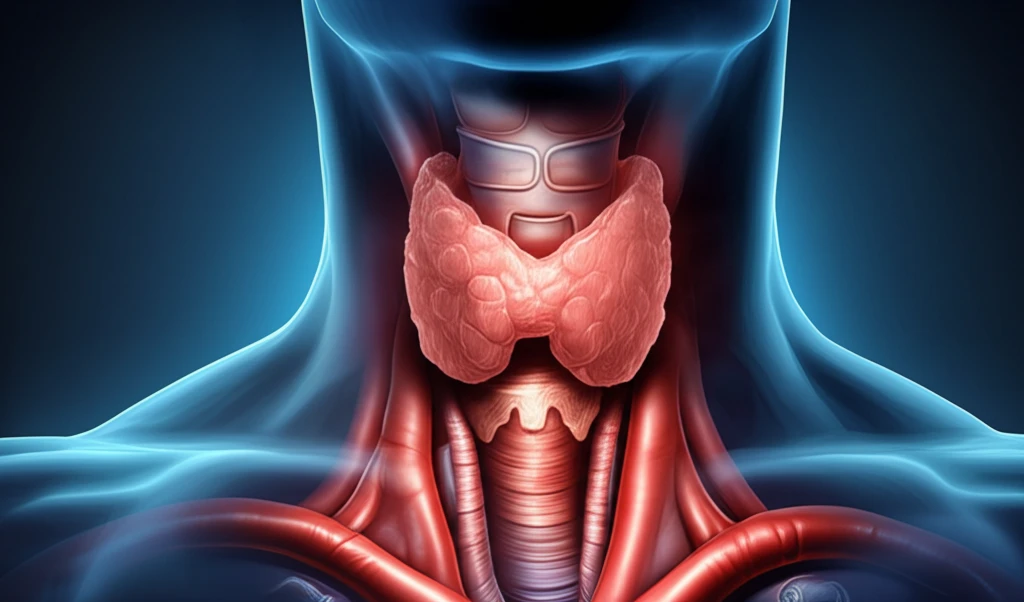
Neck Swelling? Unveiling the Mystery of Retrosternal Goiters and Superior Vena Cava Obstruction
"Learn how a rare complication of retrosternal goiters, superior vena cava obstruction, is diagnosed and treated."
Imagine experiencing shortness of breath and noticing swelling in your neck. These were the symptoms a 50-year-old woman presented with, marking the beginning of a diagnostic journey that revealed a retrosternal goiter. This case highlights the importance of recognizing the signs and symptoms of this condition, especially when it leads to more serious complications.
A goiter, in simple terms, is an enlargement of the thyroid gland. While goiters are relatively common, a retrosternal goiter is a specific type where the thyroid extends downwards into the chest cavity. This can cause a range of issues, from difficulty swallowing to, in rare cases, life-threatening obstructions of major blood vessels.
In this article, we’ll delve into the specifics of retrosternal goiters, focusing on the rare but significant complication of superior vena cava obstruction. We'll explore how it's diagnosed, what treatment options are available, and what factors might increase the risk of developing this condition. Join us as we unravel this complex medical scenario.
Understanding Retrosternal Goiters

A retrosternal goiter is defined as the enlargement of the thyroid gland that extends below the sternal notch (the top of the breastbone) into the chest. Because of its location, it can press against the trachea, esophagus, or major blood vessels, causing a variety of symptoms. Most retrosternal goiters grow slowly over time and may not cause any symptoms initially.
- Difficulty Breathing (Dyspnea): A feeling of shortness of breath, especially when lying down.
- Difficulty Swallowing (Dysphagia): A sensation that food is getting stuck in the throat.
- Hoarseness: Changes in voice quality due to pressure on the recurrent laryngeal nerve.
- Neck Swelling: Visible enlargement in the neck region.
- Cough: Persistent cough, sometimes accompanied by a feeling of pressure in the chest.
- Pemberton’s Sign: Facial flushing and arm elevation obstructs the thoracic inlet, leading to facial plethora.
Living Well With Thyroid Health
While retrosternal goiters with superior vena cava obstruction are rare, understanding the condition and its potential complications is crucial for early diagnosis and treatment. If you experience any of the symptoms mentioned, it’s essential to consult a healthcare professional for proper evaluation. With timely intervention, the outcomes for patients with retrosternal goiters can be greatly improved, ensuring a better quality of life.
